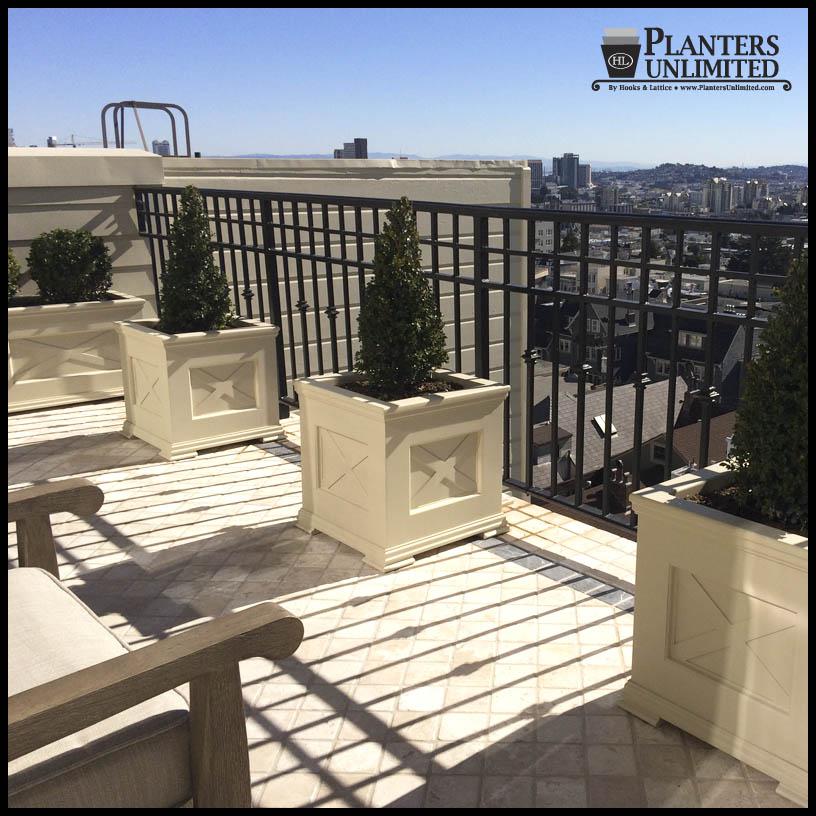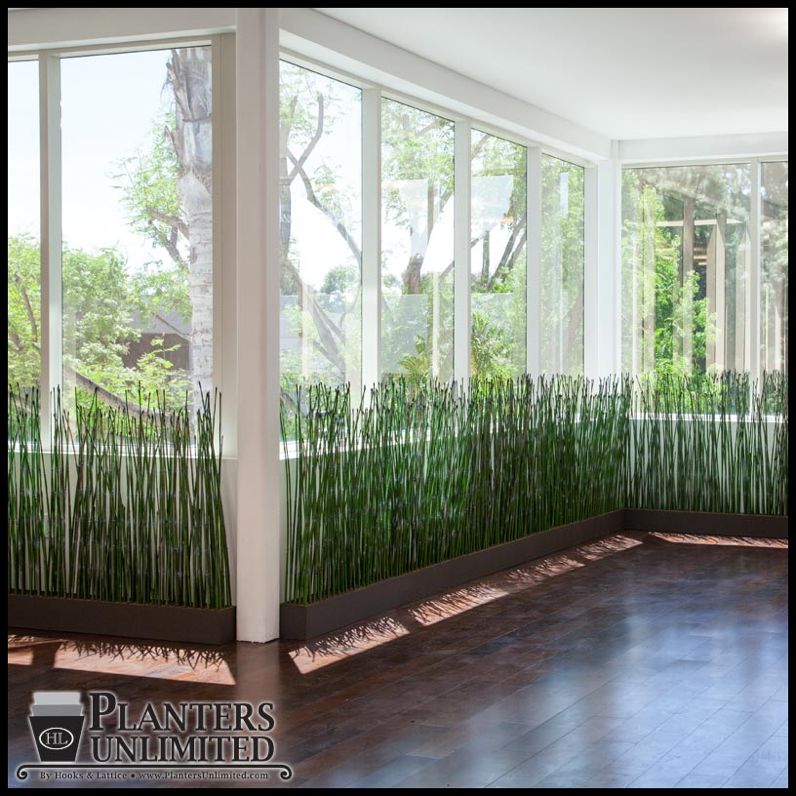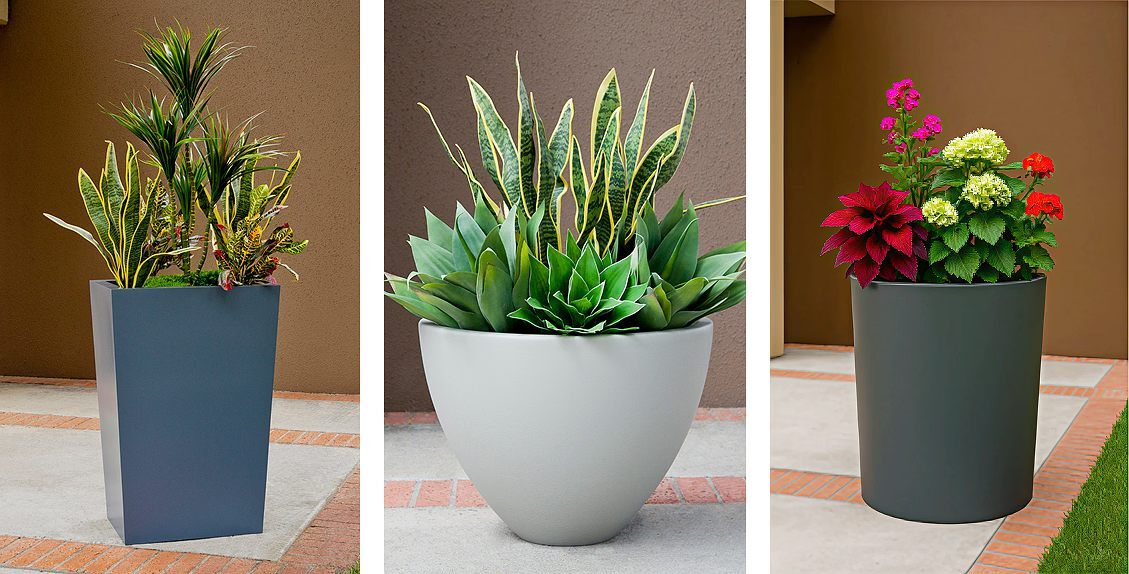Aug 10th 2015
10 Elements to Consider When Choosing a Planter Size
Choosing the size of your planter can be a difficult task, but we've broken down the process into a list 10 elements you should consider before making a decision. The first question you should ask yourself is "What am I trying to achieve with the planter?" Once you've come to a solid purpose continue down our list below:

1. Purpose
Decide up-front what your planters will be used for. Common purposes include creating visual aesthetics, defining parameters, and illuminating walkways.
2. Application and Space
Application dictates anything from a single planter to varied height sizes to achieve an effect. Your space's shape, size and other factors helps determine the planter size and how it's used.
3. Scale
Choosing an 18" planter to reside below a 30" floor-to-window space needs to be calculated with precision, including projected plant growth. Both fore and background of immediate areas should be considered as well. Example: a 30' door and a 7' door demand different size planters so choose accordingly.
4. Scope
Project scope includes limitations and possibilities affecting size. A hundred smaller planters create impact different from larger planters for the same space. Also, connecting contiguous spaces using different sizes of the same planter links your brand and builds style continuity.

artificial equisetum (horsetail reeds) in commercial
planters.
5. Function
Planter function impacts size. If it is to add greenery to a drab wall, staggering sizes, even shapes, impacts planter selection. If visual focus to a particular area is important, one massive color-filled low bowl that rests on a pedestal could be ideal.
6. Location and Sense of Place
Understand the space you're filling. Impressive concrete planters are frequently found in front of city halls or large performance venues. Conversely, hefty redwood planters make great containers for herbs and vegetables used at organic restaurants.
7. Content Determines Context
Trees need planters accommodating deep roots for stability and continued growth. By contrast, a round planter loaded with colorful flowers requires less depth. In short, vegetation choice helps determine planter size.
8. Distinction between Focal Element and Backdrop
A 5-star hotel entrance using elegant urns or massive low bowls perched on columns creates a stunning focal point. Conversely, smaller planters enhancing an estate home or thoroughbred barn can provide a more subtle yet colorful impact.

planters. Goodbye onlookers, Hello intimate
gatherings!
9. Solving an Issue
To conceal a pipe, downspout, or electrical equipment requires sufficient planter size and foliage to accomplish the task. Choosing plants and planter size to act as barriers can also be an effective solution to a problem.
10. Shape
Shape also impacts size selection. Rectangle and square planters can be custom manufactured to any size, from 12 to 18 inches to 20+ feet. In contrast, round planters and low bowls have size limits that should be considered prior to ordering.
Whether you are looking to incorporate a series of small square planters or add one large rectangular planter to your landscape, our custom capabilities allow for any size you desire. From modest to massive, we manufacture with exact precision. We are committed to making the best outdoor planters and commercial planter boxes available on the market today.
Call us today to get your project started and receive a free quote at 1-888-320-0626.

